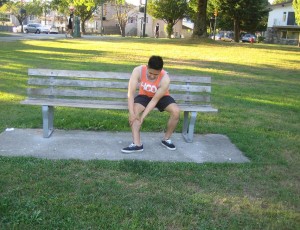An individual with a broken ankle or ankle fracture can occur from a bad ankle sprain and involves one of the bones in the ankle. Since this is a common injury, especially in sports, it is vital that you are prepared to manage one. To learn to recognize and manage bone and muscle injuries including a broken ankle, enroll in a first aid and CPR course with a credible provider near you.
What are the symptoms?
Most cases of a broken ankle are usually acute traumatic injuries triggered by severe sprain or impact. The symptoms typically include abrupt intense pain in the ankle accompanied by rapid swelling. The bruising is likely to manifest over the next few hours. It is impossible to bear weight on the ankle with maximum pain situated over the site of the fracture. An x-ray is usually requested and utilized by the doctor to confirm a diagnosis.

A close look on a broken ankle
The ankle joint is comprised of three bones – fibula, tibia and talus. The fracture can occur to any of these bones and called a broken ankle. It is important to note that the ankle can be damaged in various ways. The common injury is when the ankle is rolled over to the side such as during an ankle sprain. Oftentimes, this movement will cause soft tissue damage, however during forceful movements; a fracture can occur to either the medial, lateral or posterior malleolus.
Excessive extension or flexing of the joint can also lead to a fracture such as an extreme force particularly when landing from a height. In addition, stress fractures are also common in the ankle, particularly the talus.
Treatment of a broken ankle
The treatment of a broken ankle must be determined on an individual basis. In most cases, the ankle must be immobilized under a brace or cast and should be rested by avoiding weight bearing for 1-8 weeks. When it comes to minor fractures such as a stress fracture, it is usually managed with partial weight bearing with crutches or a walking boot.
Most cases involving a broken ankle are immobilized in a cast for up to 6 weeks. This will provide the bone enough time to heal without stress during movement or weight bearing. After this period, the cast is removed as long as there no complications suspected and a rehabilitation program must be started right away.
As for complex cases, it would require a longer period of immobilization. A displaced fracture in which part of the bone has been dislodged would require reduction or even surgical fixation with the use of metal plates or pins.
Once the brace or cast has been removed and weight bearing is possible, mobility strengthening exercises for the ankle can be started. In addition, it is also vital to restore the proprioception or coordination of the limb using wobble board exercises.
